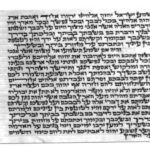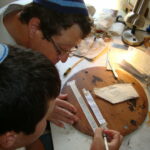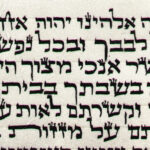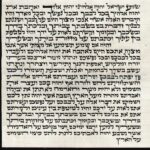Inside Tefilin – Shema Yisrael Loving G-d From The Bottom Of Your Heart
The Shema Yisrael prayer is very central in Judaism. We say it several times a day, don it in Tefilin and place it on our doors in Mezuzas. Its second pasuk tells us that we need to love G-d With your whole heart Bechol Levavecha,
With your whole heart Bechol Levavecha, a popular explanation for this statement is that a whole heart includes both the yetzer hatov – good inclination and the yetzer hara – bad inclination.
It has been stated that a child has no good inclination; instead all of their activities are either instinct or selfishness. The mind develops at the same time that the child’s body matures. This final burst of physical and mental growth brings the good inclination with it.
What do we mean by good inclination? Teenagers who were asked about this issue concentrated on the major physical and hormonal changes that they feel are very intense. However, they also said that as mature “men” they now understand the inherent value of doing good, the ability to serve G-d correctly, and to don Tefilin. This good inclination is at best a hazy concept to a small child.
During early adolescence children become more social beings. This helps to decrease selfishness and increase a desire to do what is right and assist others. However, this is still very immature. Our Rabbis of Blessed Memory have stated that there are several levels of service to G-d. The highest level of service is serving G-d through love. However, most religious people can only do this in a very limited way. The lowest level of service, which is still very good, is serving G-d through fear.
The source of the discussion that says that a child receives a good inclination Yetzer Hatov is in Avot Derebbe Natan (16 2).
It has been said that the evil inclination is senior to the good inclination by thirteen years, for it grows with and accompanies the child from the moment it comes forth from the mothers womb. If he wants to profane Shabat it does not deter him. If he wants to murder it does not deter him. If he wants to commit a (sexually) immoral act it does not deter him. After thirteen years, However, the good inclination is born in him. (Now) when he wants to profane Shabat the good inclination tells him, (the Pasuk) One who profanes it shall surely die. If he wants to murder, it tells him Whoever sheds a mans blood shall have his blood shed. If he wants to commit a (sexually) immoral act it tells him, Both the adulterer and the adulteress will surely be put to death.
The reasoning abilities that the new good inclination exhibits is the result of education that parents have struggled to teach the child. Hopefully the reasoning will work in preventing the child, whose body is much larger and competent in sinning, from performing the sin.
The method of this nascent good inclination follows the simplest form of religious service; that of serving G-d through fear. The battle against the inclination to do evil leans against the inclination to do good. The body likes the short-term pleasure that the evil inclination brings. This new social reasoning is still budding. Through further development good children can grow to levels of Love of G-d.











